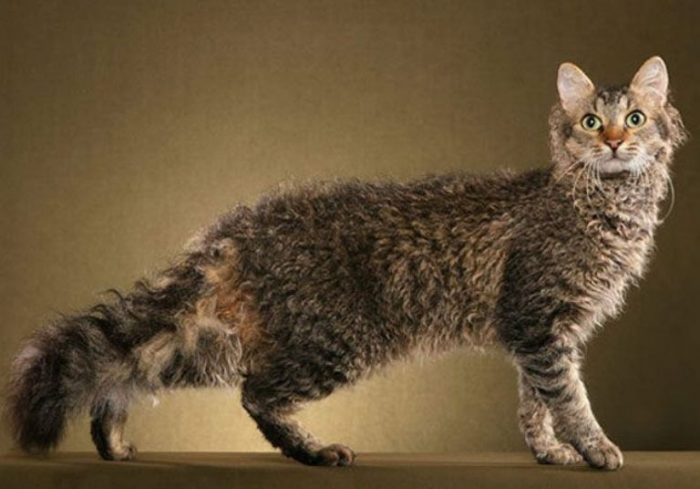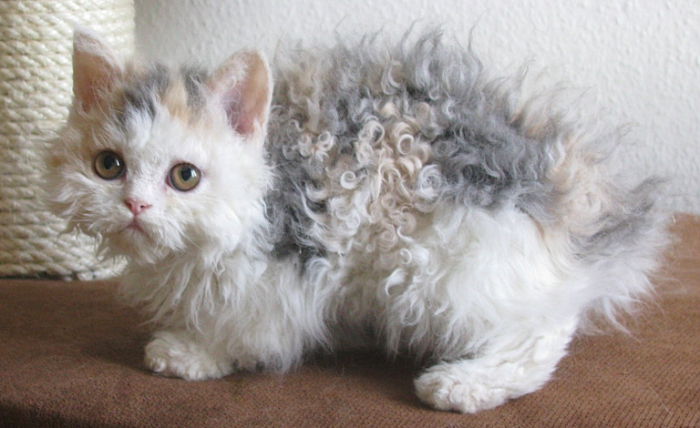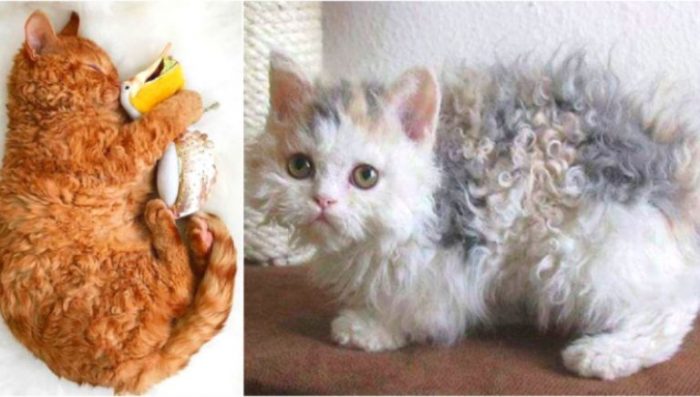In recent times, cat breeds with curly hair have gained popularity, thanks to their attractive coats. Curly coats on kitties are usually the consequence of gene mutation and developing these distinct breeds of feline requires time, as well as dedication from breeders who are skilled in the business. Some of these cats are good-natured and make excellent companions. Curly-haired cats are just irresistible, incredible, as well as rare, and they are pricey too!
Table of Contents
Cat Breeds With Curly Hair; Things To Know
The coat of your typical domesticated feline can be obtained in three types of hair structure
- The guard hairs
This is the cat’s outer coat and it comes a bit stiff and straight. The function of the guard hair is to provide your furry companion with insulation, as well as prevent the animal’s skin from getting soaked with rain.
- The awn hair
This is the layer located in the middle, the awn hair is relatively shorter than the outer coat but it is softer and denser.
- The down hair
This is the third layer also referred to as the undercoat. It is known for its very fine texture and is equally soft and short.
Felines sporting curly coats have one or more absent or distorted elements of the essential three-part cat coat. This is what causes the curls; more often than not, it guarantees reduced shedding or the cat may live without shedding at all. For this reason, curly-coated cats are recommended for potential cat parents who have cat allergies as they will be less irritating. However, this cannot be guaranteed as people differ.
Quick Facts About Cat Breeds With Curly Hair
- Cat breeds with curly hair may be hypoallergenic; shedding very little or not all.
- The eyebrows and whiskers of curly-coated cats may also be curly.
- The Devon Rex is among the smallest feline breeds with curly hair.
What Breed Of Cats Have Curly Hair?
At the international level, we have just four rexed breeds of felines that are recognized, they include Cornish Rex, LaPerm, Devon Rex, and the Selkirk Rex. These breeds have their curly coats encoded by diverse rexed mutations; this is the reason they occur in varying forms and appearances.
1. The Cornish Rex

The Cornish Rex is one of the most remarkable curly-coated cats available. Its coat is completely devoid of the middle or outer layers (awn hairs and guard hairs). Only the fine and incredibly soft down coat is available at about 1cm long. The breed is susceptible to loss of hair which is mitigated by developing a thin down coat or undercoat that goes partly bald in some body parts over time.
For this reason, the breed is vulnerable to weather conditions and temperature changes. Just like all hairless breeds, this furry fellow is ill-equipped to handle weather issues of any sort which is a good reason to keep your Cornish Rex as an indoor-only cat. If the cat must venture outdoors, then it must be supervised for the sake of safety and health.
The coat of the Cornish Rex is encoded by a particular recessive gene known as ‘r’, this means that only homozygotes (kitties that inherit the r gene from both parents) will have the trait. Temperament-wise, the breed is athletic, active, and can make wonderful companions.
2. The Devon Rex

The appearance of the Devon Rex is quite unusual, more pixie-like, sporting huge ears, and eyes that have a remarkable look almost like an E.T. expression. The coat of the Devon Rex is plush, curly, and short without the undercoat. The coat type is realized from a recessive mutation known as ‘re’; this means that only the homozygotes will become curly. The breed is known to be intelligent, people-oriented, and loves to court companionship. The cat is very active and sheds minimally.
3. LaPerms

The LaPerms have become an internet sensation; the breed is adorable and vibrant both on the inside and outside. Their “perm” is a result of a dominant mutation (Lp); this means that all LaPerms will carry curly coats even when they only get the Lp mutation from one of their parent (this is known as a heterozygote). The coat of the LaPerms is very sensuous, iconic, and sports pompous soft curls.
The breed can be obtained as both longhair and shorthair. Notably, some LaPerms kittens are born completely without hair and some may lose their hair within three weeks after they are born. Their iconic and luxurious hair will grow back after a few months; however, they will need to pass through different stages of baldness in the first four months of life. The breed is completely unique among the feline population with a remarkably sweet and loyal heart, in addition to a body flooded with head-turning waves.
4. Selkirk Rex

When it comes to felines with a curled coat, the Selkirk Rex is rated the highest. Compared to the Cornish Rex and the Devon Rex, the coat of the Selkirk Rex is longer and denser. Relative to the LaPerms, the Selkirk Rex’s coat is fuller and plusher. The breed can come either with a short or long coat and the gene responsible for this is known as ‘Se’ which is known to be incompletely dominant. However, homozygotes will have tighter curls with less voluminous coats while heterozygotes will have less tight curls with fuller coats.
The Selkirk Rex is distinguished by its large, big-boned body, sporting sturdy limbs, full body, and rounded head. Relative to the other Rex varieties, the Selkirk is less athletic, less active, and not as people-oriented. However, it makes a beautiful household pet and is sure to become the center of attraction – thanks to its extraordinary teddy bear looks.
Recap Of Cat Breeds With Curly Hair
- The Cornish Rex
- The Devon Rex
- LaPerms
- Selkirk Rex
Read Also: Medium-Haired Cats: 8 Breeds & All The Facts You Need To Know
Tips And Tricks: How To Care For Kitty Locks
The Devon Rex and the Cornish Rex come in fine coats with loose curls and can be prone to partial baldness; some can be completely bald. Because of this, people are often misled to believe that their grooming needs are low but this is far from the truth. Their skin is susceptible to allergies, irritations, sunburns, and injuries because it is exposed, thus, they may need even more maintenance than the ragdoll.
For the aforementioned reason, their body temperature needs to be maintained by moisturizing their skin, monitoring the cat’s exposure to the sun, and aiding them in efficiently maintaining their body temperature. The natural oil produced by the skin cannot be effectively absorbed by their fine coat which calls for occasional baths.
The grooming needs of the Selkirk and the LaPerms are different since their curls are tighter and denser. A special hairbrush for curly coats should be used in brushing their coat twice a week or more. The locks have the tendency to be the tightest in the limbs, tummy, and neck, thus those areas require special attention. Always ensure that all the tangles are combed out, leaving the coat soft and clean. During brushing, you will have the opportunity to look out for skin irritations, pesky parasites, as well as allergies!
Apart from constant brushing, some trimming and shampooing may also come in handy, and remember – the cat’s mouth and ears should also be kept clean.
